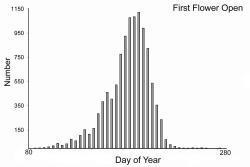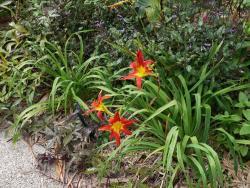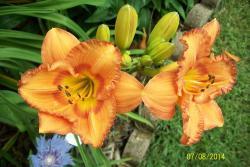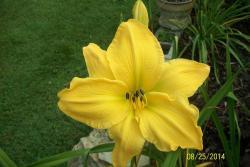beckygardener said:About "dormancy" ...
What is it called when a daylily literally disappears from sight above ground? I thought those were the dormant daylilies. Mine completely lose all foliage and then grows new leaves come warmer weather.
A daylily that loses all its leaves would more or less be deciduous. If it does not grow (new leaves) until warmer weather then it could also be ecodormant or it could be endodormant.
The usual behaviour of a plant that is endodormant during the winter is that it will go dormant in the garden in most locations. In locations where the plant does not experience enough "chilling hours" (time when the temperatures are low - cold) the plant may not sprout for a long time after the spring arrives, or it may not grow properly or grow well, if it does sprout (or when it does sprout).
The usual behaviour of a plant that is ecodormant during the winter is that it will go ecodormant in the garden in some locations but not in other locations. If it goes ecodormant because the temperature is too low for it to grow then it will not go ecodormant in locations where the temperatures stay above its minimum growing temperature. As an example, cultivar A may go ecodormant when the temperatures are lower than 45F. It might require three days in a row when the temperatures are that cold to go ecodormant. Cultivar B may go ecodormant when the temperatures are below 35F. It might require four days in a row when the temperatures are that low to go ecodormant. Cultivar C may go ecodormant when the temperatures are below 30F. It might require two days in a row with temperatures that low to go ecodormant. Cultivar D may go ecodormant when the temperatures are below 25F.
For those sorts of ecodormant dayliles, when the temperatures rise above their lower limits they will start to grow again. Cultivar A might start to grow again as soon as it experiences two days in a row with temperatures above 45F. Cultivar D might start to grow again as soon as it experiences five days in a row with temperatures above 25F.
There is catch-22 to all of this. The lower the temperature, the slower the growth. At low temperatures it may take many days for a daylily to grow enough to see any difference and it will be a very small difference. A daylily may disappear completely under the soil. The tip of its bud might be one inch below the surface of the soil (or even lower). At low temperatures the cultivar might only grow a fraction of an inch each month; it could take many weeks of growth before the tip of the fan appeared above the soil.
The question of whether some daylilies become ecodormant or endodormant could be important to daylily growers in locations with mild winters. Endodormant daylilies (if there are any) might not grow well in locations with mild winters where they do not receive enough chilling hours. However, simply because a daylily does not grow well in locations with mild winters does not necessarily mean that it is endodormant. Ecodormant daylilies should be able to grow well in locations with mild winters since they do not need to experience cold temperatures to stop being ecodormant. One should keep in mind that locations with mild winters may also have hot summers or droughts. Some daylilies may not do well at high temperatures or in droughts.




